Today, the ability to explore England’s magnificent country houses is almost taken for granted. Whether visitors are on a staycation or have travelled across the globe to soak up England’s storied history, stately homes are likely to feature at the top of their itinerary.
But 75 years ago, the opportunity to see behind the grand front doors of the aristocracy was virtually unheard of. So when Longleat House, 18 miles south of Bath, opened to the paying public on 1 April 1949, it grabbed national attention.
A radical decision
The 6th Marquess of Bath, Henry Frederick Thynne, took the pioneering step to open up Longleat to ensure Longleat’s survival. After the death of his father, the 5th Marquess, in 1946, large portions of the Longleat Estate were sold to pay huge death duties. But with Longleat’s future still not secure, Lord Bath made the then radical decision to turn his ancestral home into a tourist attraction.
In some ways it is perhaps not surprising that Lord Bath took this leap. In the 1930s he had cut his teeth in the tourism industry while running the famous show caves at Cheddar (25 miles west of Bath), which today are operated by Longleat as Cheddar Gorge & Caves.
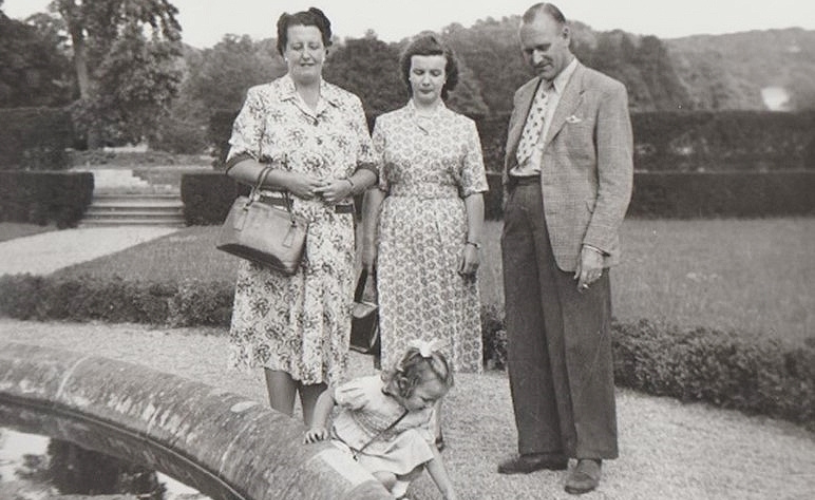
Image: A family visiting the formal gardens at Longleat, c.1940
A homespun affair
Plans to open Longleat commercially came together rather hastily and were something of a homespun affair. The first guide to the House was written by the 6th Marchioness, Daphne, supposedly in just three weeks. These were sold in the main entrance along with a small selection of postcards, fruit from the walled kitchen garden and jars of honey thanks to the Longleat bees, the latter a tradition which still exists today.
Entry was charged at 2/6 (two shillings and sixpence), or one shilling for children. The guided tour, sometimes given by members of the family themselves, took in the spectacular Elizabethan Great Hall and ornate 19th-century State Rooms, libraries, dining rooms and bedrooms. Visitors could also enjoy the beautiful formal gardens and the magnificent ‘Capability’ Brown parkland. By the summer, a café had been created in the former chapel to meet the needs of hungry visitors.
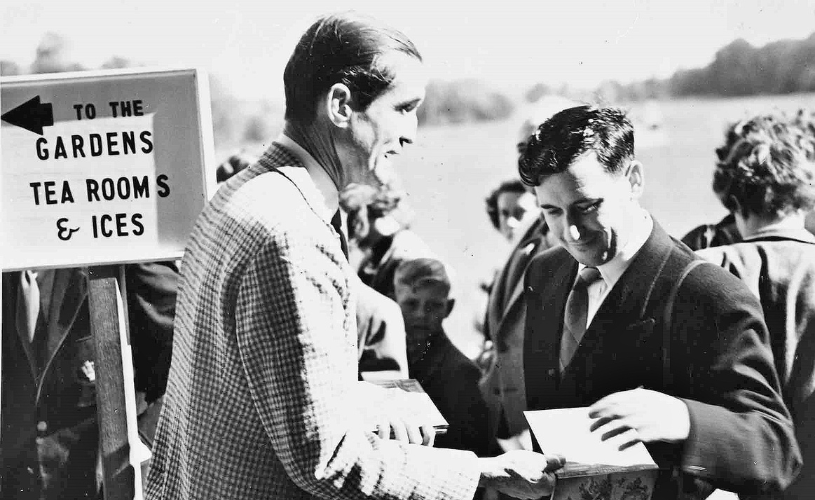
Image: The 6th Marquess selling guidebooks in the gardens of Longleat c.1940s, credit The Wiltshire Times
Making headlines
The opening of Longleat captured public and press attention the world over, from nearby Warminster in Wiltshire to Wellington in New Zealand.
Newspapers described how numerous great estates faced the same existential threats as Longleat. Lord Bath’s brave and pioneering approach to raise funds was heralded as providing the almost unique opportunity for the public to see the magnificent interiors and collections normally hidden from view.
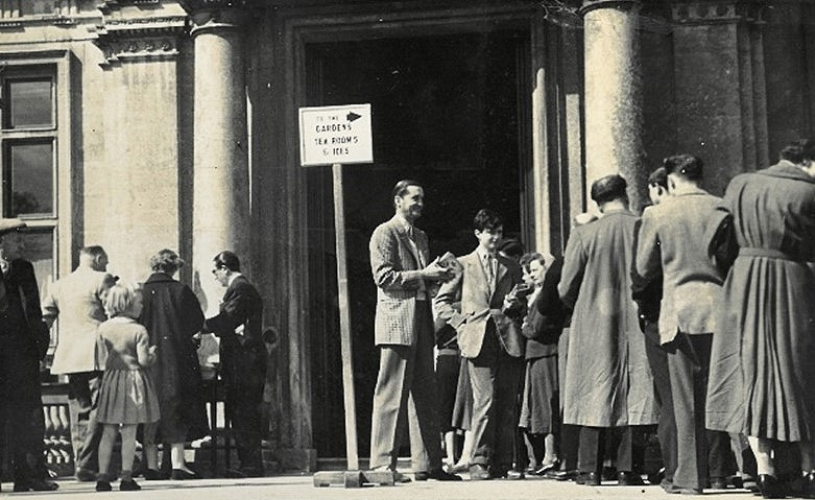
Image: Lord Bath and Lord Valentine welcoming visitors to Longleat c.1952, credit Longleat
Longleat on screen
Longleat was not the first private stately home to open commercially, but it arguably became the most prominent. Part of this was due to the personality of Lord Bath, who threw himself into publicising his new venture and soon became a leading figure among the other owners who opened their houses.
In June 1949, two months after Longleat opened to the public, a corner of the Great Hall was recreated in a BBC television studio at Alexandra Palace for the live broadcast of a 30-minute documentary presented by Lord and Lady Bath.
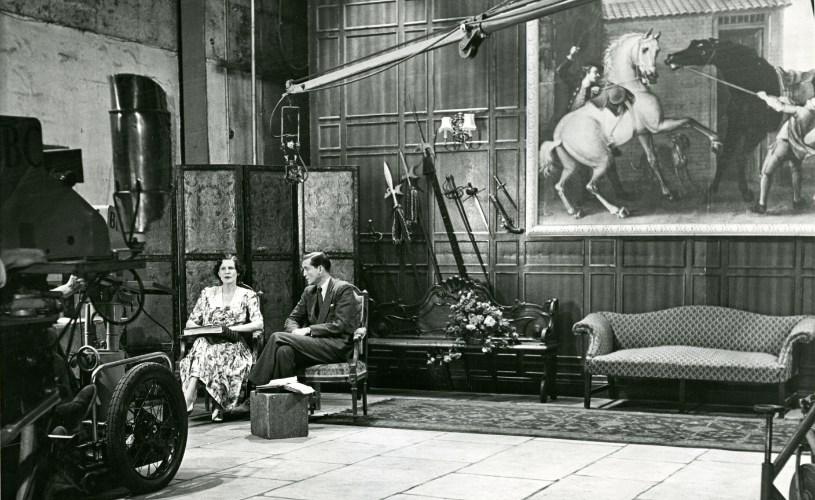
Image: Lord & Lady Bath promoting Longleat at Alexandra Palace in London, June 1949
In preparation, BBC producers visited Longleat and were provided with dozens of photographs of interiors and paintings to inform the set design. The programme proved excellent publicity for Longleat and further brought the plight of stately homes in the post-war period to national attention.
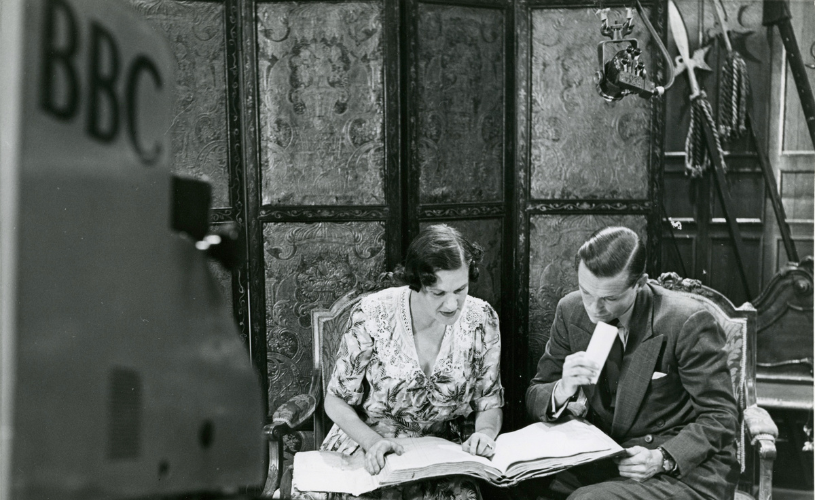
Image: Lord & Lady Bath promoting Longleat at Alexandra Palace in London in June 1949, credit BBC
A pioneering visitor attraction
In the first April to September season, 138,000 visitors came to Longleat, a staggering number that no-one could have predicted. With car ownership still limited, many visitors in the early years came by coach, often on itineraries that included Bath.
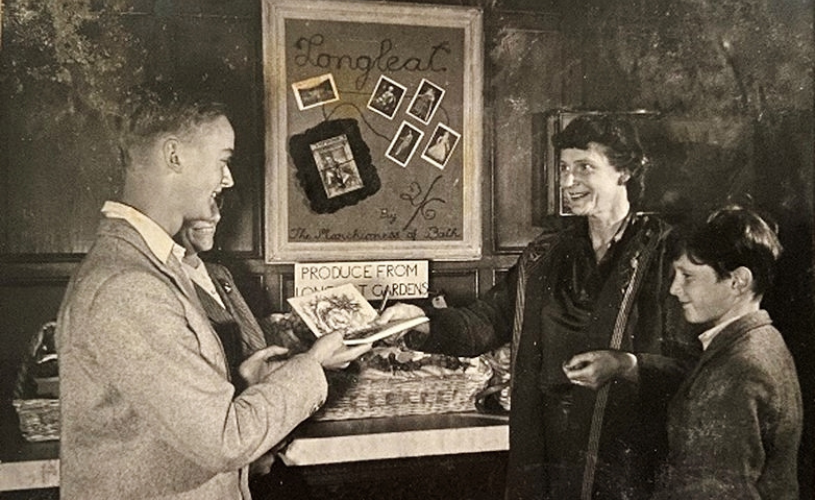
Image: Lady Bath & Lord Valentine's souvenir stand at Longleat c.1949-1950, credit Longleat
Longleat’s early success quickly led to developments to improve the visitor experience, with the leading garden designer Russell Page employed to remodel the formal gardens.
Soon, other attractions and events were introduced to maintain Longleat’s position as a leading visitor attraction. These included a garden centre, a petting zoo, pop concerts (including the Rolling Stones 60 years ago in 1964), a narrow-gauge railway, and of course, in 1966 the famous Lions of Longleat, the first safari park outside Africa. This pioneering spirit has very much continued to the present day.
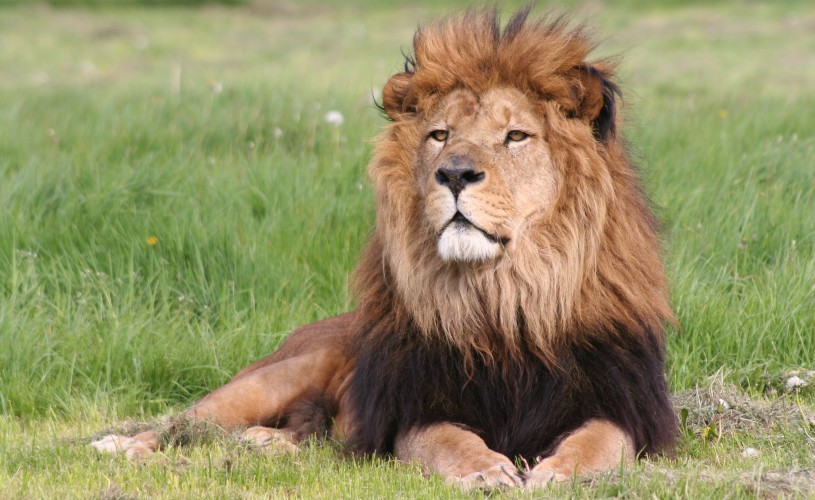
Visiting Longleat House today
Today, Guided Tours of Longleat House take in everything that was on show in 1949 and more, with additional rooms and floors having been opened over subsequent decades. Until 17 July 2024, visitors will also be able to see archive photographs, documents and memorabilia relating to the opening of the House in 1949.
Guided Tours are included with Longleat House & Garden tickets or can be booked in addition to the Longleat Day Ticket. For those who want a more in-depth, personal experience, VIP tours are also available.
Related
Comments
Comments are disabled for this post.





